Future of Panther Arena, High Life Theatre Uncertain
Wisconsin Center District could pursue redevelopment of properties.
Downtown has seen plenty of change in the past 75 years, but two big things have remained consistent. On W. Kilbourn Avenue, an arena has stood at the intersection of N. Vel R. Phillips Avenue and an auditorium has stood at N. 6th Street.
Now that could change.
The Wisconsin Center District, which owns the UW-Milwaukee Panther Arena and Miller High Life Theatre, has hired a consulting firm to explore the future of both buildings.
It’s also only entertaining short-term lease renewal with its existing tenants, including the UW-Milwaukee men’s basketball team, the Milwaukee Admirals minor league hockey team and the Milwaukee Wave indoor soccer team. The longest remaining agreement is the UW-Milwaukee naming rights deal, which expires in 2029.
One or both of the facilities could be replaced by a large, convention hotel.
“We need to consider what is the best and highest usage of the facilities and the WCD’s real estate,” said WCD CEO Marty Brooks during a May board meeting. “If we aren’t growing, we as an organization are dying.”
During the 2024 opening of the $456 million Baird Center expansion, Brooks shared his thoughts on the need for a convention center hotel with Urban Milwaukee. “It’s something I would love to see in the years to come, to see a 600-to-800-room convention center hotel. But that’s for tomorrow,” said the CEO.
A convention hotel is seen as a desirable amenity because it would allow large groups to avoid splitting their guests across multiple properties and would be directly connected to the center by a climate-controlled skywalk.
Hunden Partners is developing a master plan, which is expected to be presented to the WCD board in January. According to Brooks, the firm will evaluate what types of events WCD cannot host due to insufficient capacity or amenities as part of its study. WCD is also compiling a 20-year capital plan for both venues.
Board members, led by Marcus Corp. CEO Greg Marcus, encouraged Brooks to expand the Hunden study to explore the development potential of other underused neighboring properties. Suggested sites included the former Milwaukee Public Museum site, the soon-to-be-vacant state office building at 819 N. 6th St., a city-owned parking lot at 401-441 W. Wisconsin Ave. and a privately-owned site at 601 W. Wells St.
Marcus has also already publicly changed its hotel investment decisions because of the potential for a large, competing hotel. It owns the Hilton Milwaukee, currently the largest hotel in the city.
On Friday, in the first board meeting since May, Brooks addressed the potential that the study is a strategy to develop a convention center hotel.
“A few people have expressed concern that it has already been determined a convention center hotel will be built on the site of either the arena or theater. Let me assure you that there has been no determination made about the future of those venues,” said Brooks. “The Hunden Partners study, along with the independently performed 20-year capital plan for the arena and theater, are being developed so that the WCD staff can develop options to present to the board for consideration. Those options could include seeking long-term leases with UWM, the Admirals and the Wave and continuing to operate both buildings as they are today.”
The theater, redeveloped from its longtime use as the Milwaukee Auditorium in 2003, still has approximately $20 million in remaining debt that doesn’t mature for approximately a decade.
Panther Arena, opened in 1950 as the Milwaukee Arena. It serves as the region’s mid-sized venue, and the largest venue with a permanent ice sheet. The Admirals relocated to the arena in 2016, leaving the Bradley Center just a couple of years before it was demolished. The Bucks deliberately chose not to include a permanent ice sheet in Fiserv Forum to improve the arena bowl design and basketball court safety. UW-Milwaukee has long played in the 12,700-seat arena, with select games on campus in the 3,500-seat, gymnasium-style Klotsche Center.
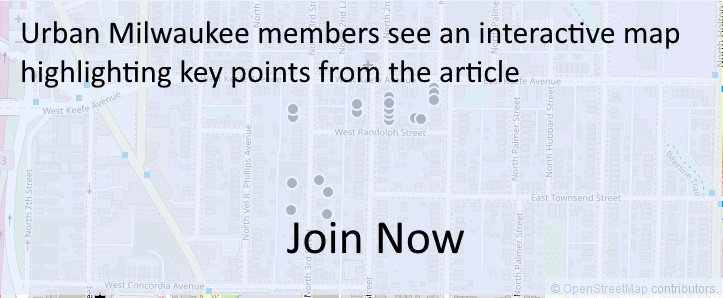
Existing members must be signed in to see the interactive map. Sign in.
If you think stories like this are important, become a member of Urban Milwaukee and help support real, independent journalism. Plus you get some cool added benefits.


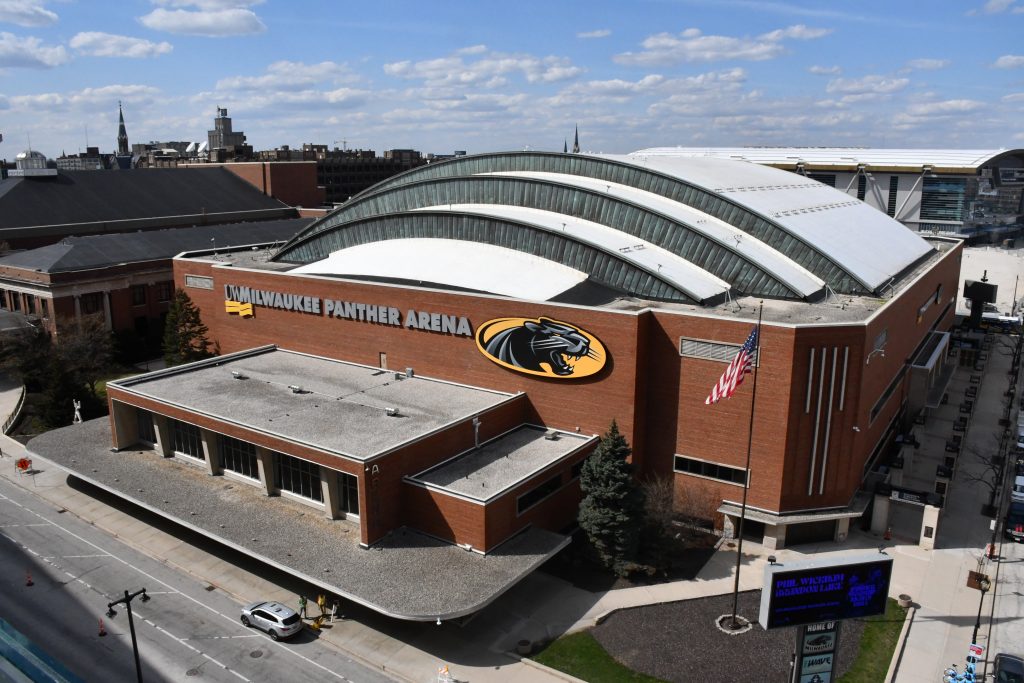
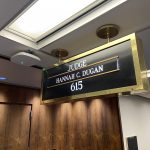

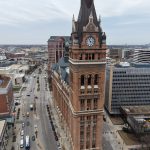














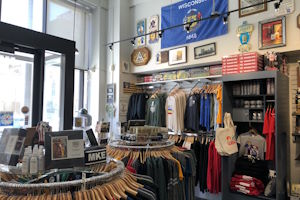
Save the Arena! It’s an Art Deco architectural wonder.
If a large “convention headquarters” hotel is needed, wouldn’t the site of the soon-to-be-abandoned Public Museum be at least as good?
Ha! Brooks has been all over the place on this over the past 36 hours. This morning, the study was still about highest and best use of the arena and Miller Theater sites. This afternoon, after much justified pushback by UWM, the Admirals, and various politicos, the story of the study has suddenly changed to include looking at non-WCD owned sites for a convention hotel.
Good to hear, and fun to watch. Marty Brooks sure is entertaining…
I thought the conventional (no pun intended) thinking post-COVID was that large in-person conventions and trade shows were unlikely to return to their pre-pandemic size and frequency. If this is still the case, why would we build more exhibit space – especially at the cost of two historic and functional buildings?
Astute observation, F.F.
The Hilton and the Hyatt are both already attached to the convention center; now we need another hotel attached? Why can’t one of those existing hotels be expanded? Let one of them take the risk that the convention market could bottom out again.
Once upon a time, they tore down the University of Wisconsin extension on 6th and State, with the intention of making the land available for a hotel there too. How is that working out for them….some 30+ years later? I think that there was another fairy tale about a hotel on the property on 5th and Wisconsin…. Just Bring back Marc’s Big Boy.
@ Alan Bartelme, I’m on board with you. In fact, when public input was sought on the “Connecting Milwaukee” 2040 plan more than a year ago, one of the notes I posted on the map was that I believed the current Hyatt Regency site was the ideal site for a convention hotel. A full block and immediately across the street from the new entrance. Only problem is that there is already something there which happens to be a hotel (481 rooms).
Now same argument could be made for the Arena and Milwaukee Theater. However, I would argue that the former is a beloved Milwaukee-iconic venue, the latter apparently still has a lot to pay off on a 20-year loan (or some such), while the Hyatt is, well, the Hyatt. Also, do we really want a skywalk over Kilbourn cutting off that imposing view of the Courthouse? All because people lacked imagination…
As for the Hilton, I get it, and would love to see that lot across the street *finally* developed. But, I dunno. Marcus Corp is already the biggest player downtown and has been for many decades—Hilton, Pfister, St. Kate. And, with gratitude for the family’s generosity—Marcus Center support, the new Symphony Center, and I’m sure much, much more—the company does seems slow to pull the trigger on anything and is belly-aching about a new convention hotel taking public support. Right? Took off market 175 rooms last year in a hissy, only to announce adding them back on recently. Fine. Why doesn’t Marcus simply buy the lot across the street, ask for subsidies, add 400+ rooms, and call itself the downtown Milwaukee convention hotel? I think it’s because, even when their $40 million renovation is complete, they still know their sleeping rooms are largely small compared to today’s standards and would not compete with convention hotels in similar markets.
WEIRD IDEA:
If they ill -advisedly demolished the Arena for something else, I wonder if there would be room at the Iron District site or another site for a consortium of sports entities—proposed, nascent USL soccer team, Marquette soccer and lacrosse, and the UWM basketball, the Admirals, and the Wave—to join forces and somehow build or have built a multi-sport, four-season facility. Basically, the Panthers, Admirals, and Wave already do this for indoor sports in the fall/winter months and MU and the USL team would have done this for outdoor sports in the spring and summer. (And, there is notably little overlap between the seasons for the indoor and outdoor sports! I checked.) There already exist a handful of larger facilities in the US and abroad capable of this. And, MU and the USL team were already anticipating using synthetic turf. Milwaukee is already used to one retractable room…
Food for thought.